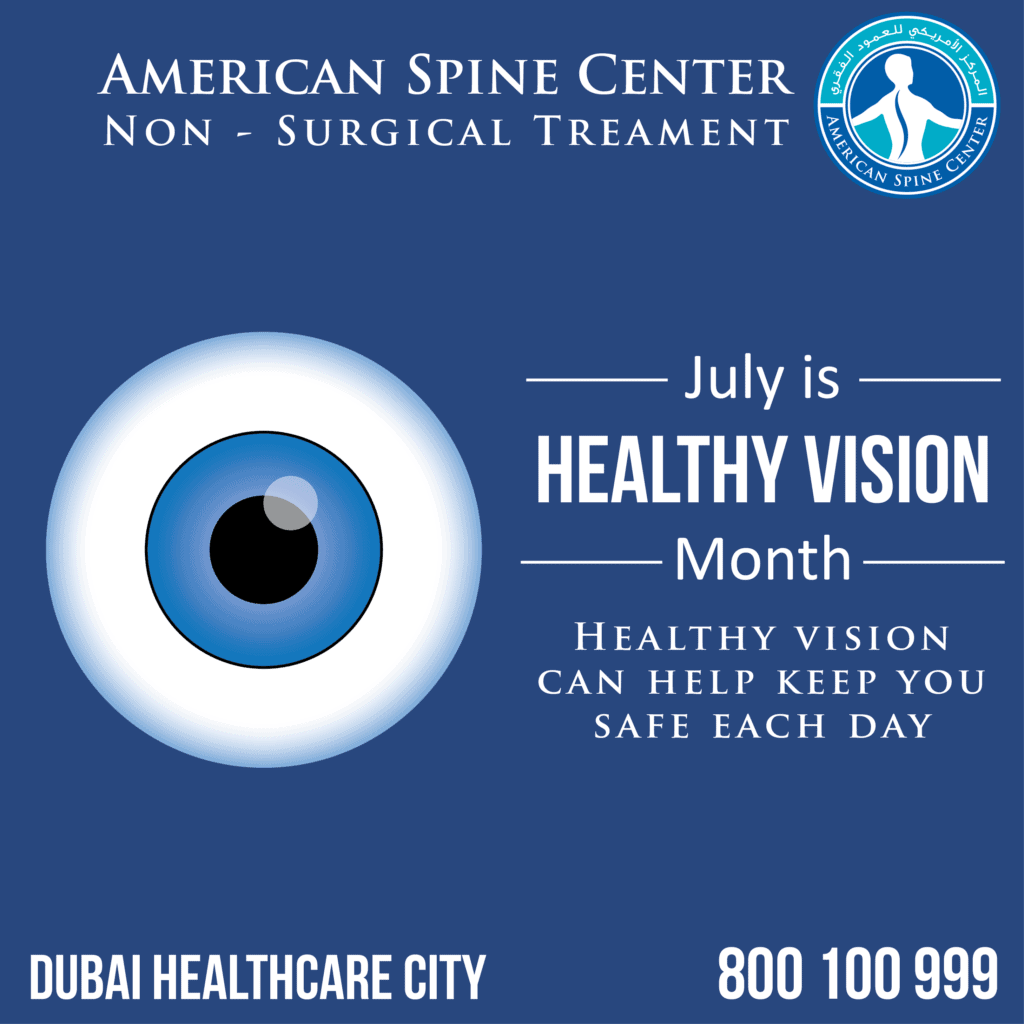Paying attention to your vision is important for your safety and overall health. People with vision problems are more likely than those with good vision to have diabetes, poor hearing, heart problems, high blood pressure, lower back pain and strokes, as well as an increased risk for falls, injury and depression.
Q: Is a there any unexpected link between posture and your Eyes?
A: YES!
Anatomical links affect more than the way you learn—they can change and, even, dictate your health. In this area, you’ll discover the link between your posture, or how you stand, and your eyes.
To use the link between the position of your spine and your optic health to your advantage, you first must understand how the connection works.
Eyes to Brain
Your eyes represent a complex part of your central nervous system, connected directly to the brain. To see the way you do, your eyes accept light beams. These beams hit the photoreceptors, known as rods and cones, located in your retina at the back of your eyeball. The signals the retina receives translate into electrical impulses, which travel on the optic nerve into the brain’s visual cortex.
Brain to Spine
When impulses reach the visual cortex, your brain interprets them and uses them to determine how the body should respond. The brain sends messages down the spinal cord to tell the rest of your body how to react to what the eyes see. When you have good posture, the communication your brain sends via your spine comes fast and uninterrupted. Your brain stays in constant command of your body, using information gathered from each of the five senses, including sight.
Eyes to Spine
Over time, slumped or hunched posture affects the connection quality between the spinal cord and the brain. This creates a lag between your eyes seeing an object, your brain interpreting the image of the object, and your body responding to the object. In fact, poor posture can result in many health issues, including slowed circulation, shallow breathing, and blurred vision. But the relationship also goes the other way. If you have poor eyesight, you may squint, lean forward, or tilt your head into an unnatural position to see more clearly. These movements create muscle tightness in the shoulders, neck, and head. Over time, this maladjustment can decrease blood flow to and impulse connection with your eyes.
Results of This Connection
When you have healthy posture and decent (or corrected) eyesight, the connection between your spine and your eyes remains strong. When your spine or eyesight experience problems, however, it can result in health complications. These may include:
- Blurred vision or difficulty focusing the eyes
- Decreased circulation which causes numbness and muscle strength issues
- Eye strain or fatigue
- Headaches or head pressure
- Head, neck, shoulder, and back pain
- Misalignment of the neck or spine
- Nerve pain throughout the body, including in the limbs
- Vision deterioration
Attempts to fix one portion of the problem may only be successful in the early stages. After your spine and eyes form a long-term, unhealthy relationship, you may need to address each cause to remedy the health issues listed above.
Improving the Relationship
If you experience any of these symptoms or you suspect a combination of vision and posture problems is affecting your health, talk to a medical professional. Identifying vision characteristics may represent a key factor in improving your health, even if you already wear glasses or contacts for vision correction.
One of our Doctor Specialists may recommend any of the following solutions:
- Changing the way you commonly sit or stand to promote better posture
- Meeting with a chiropractor or physical therapist to treat spinal misalignment
- Participating in a posture conscious form of exercise such as yoga
- Performing eye exercises to improve eye performance
You may alleviate some of your symptoms using a newer, more accurate vision prescription and simple exercises. But in some cases, you may need to reach out to other professionals for help as well. Be mindful of the effect your eyesight and posture have on each other. A healthy spine promotes fully functional eyes, and vice versa.
Here are several other ways to help protect your vision too:
- Know your family’s eye health history; some eye conditions are hereditary and require early intervention.
- Wear protective eyewear like safety glasses, goggles and shields when playing sports, doing home repairs or yardwork, or in the workplace if necessary.
- Eat healthy foods, including dark, leafy greens like spinach, kale, and collard greens and fish high in omega-3 fatty acids, like salmon, tuna, trout and halibut.
- Get active. Being physically active can also lower your risk of health conditions that can cause eye health or vision problems — like diabetes, high blood pressure, and high cholesterol.
- Quit smoking or never start. Smoking increases your risk of diseases like macular degeneration and cataracts — and it can harm the optic nerve.
- Wear sunglasses — even on cloudy days! Be sure to look for sunglasses that block 99 to 100 percent of both UVA and UVB radiation.
- Give your eyes a rest. Digital eye strain is a growing problem. Try using the 20-20-20 rule throughout the day: every 20 minutes, look away from digital devices and focus about 20 feet in front of you for 20 seconds
- Always wash your hands before handling your contact lenses.
AMERICAN SPINE CENTER
Timing: 9am until 9pm, Saturday to Thursday.
Contact us: 800-100-999
Location: Al Razi Building 64, Block F, Dubai Healthcare City, Dubai, UAE.
Source:
